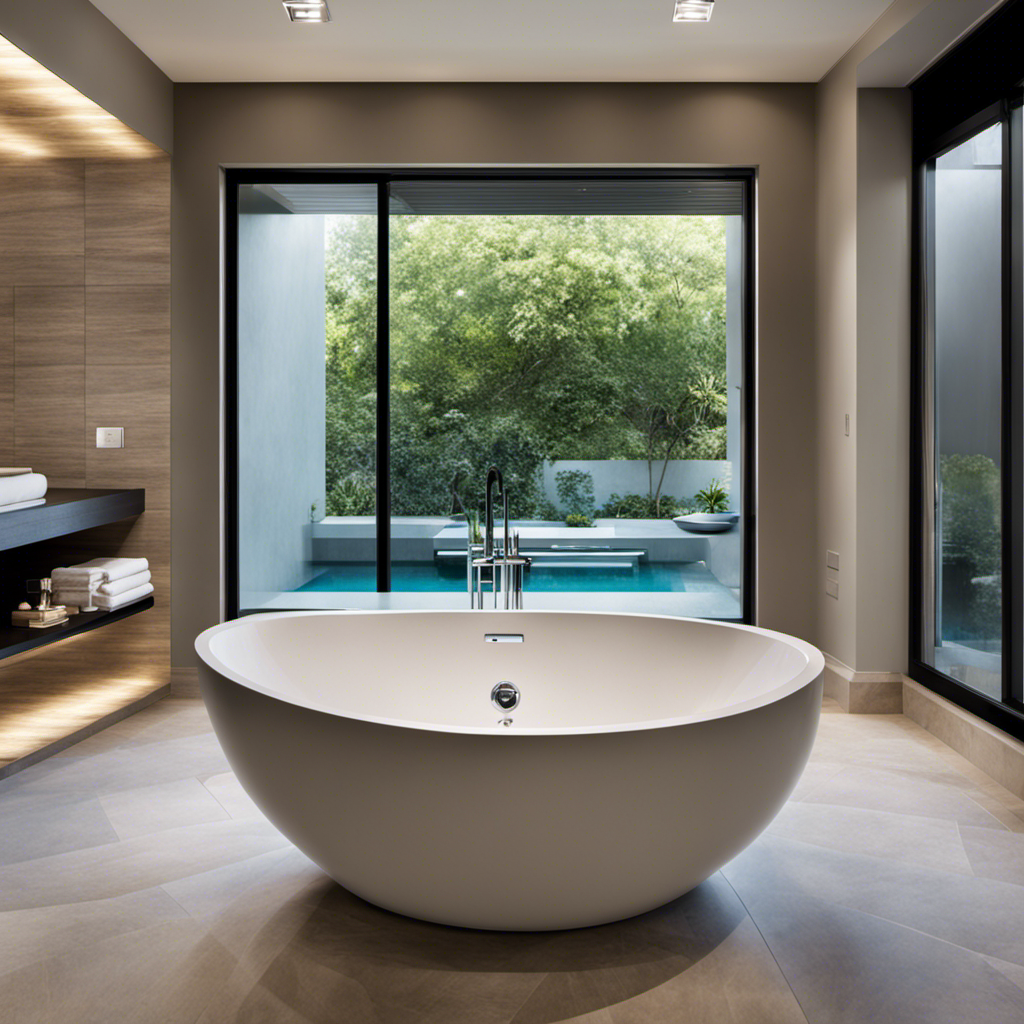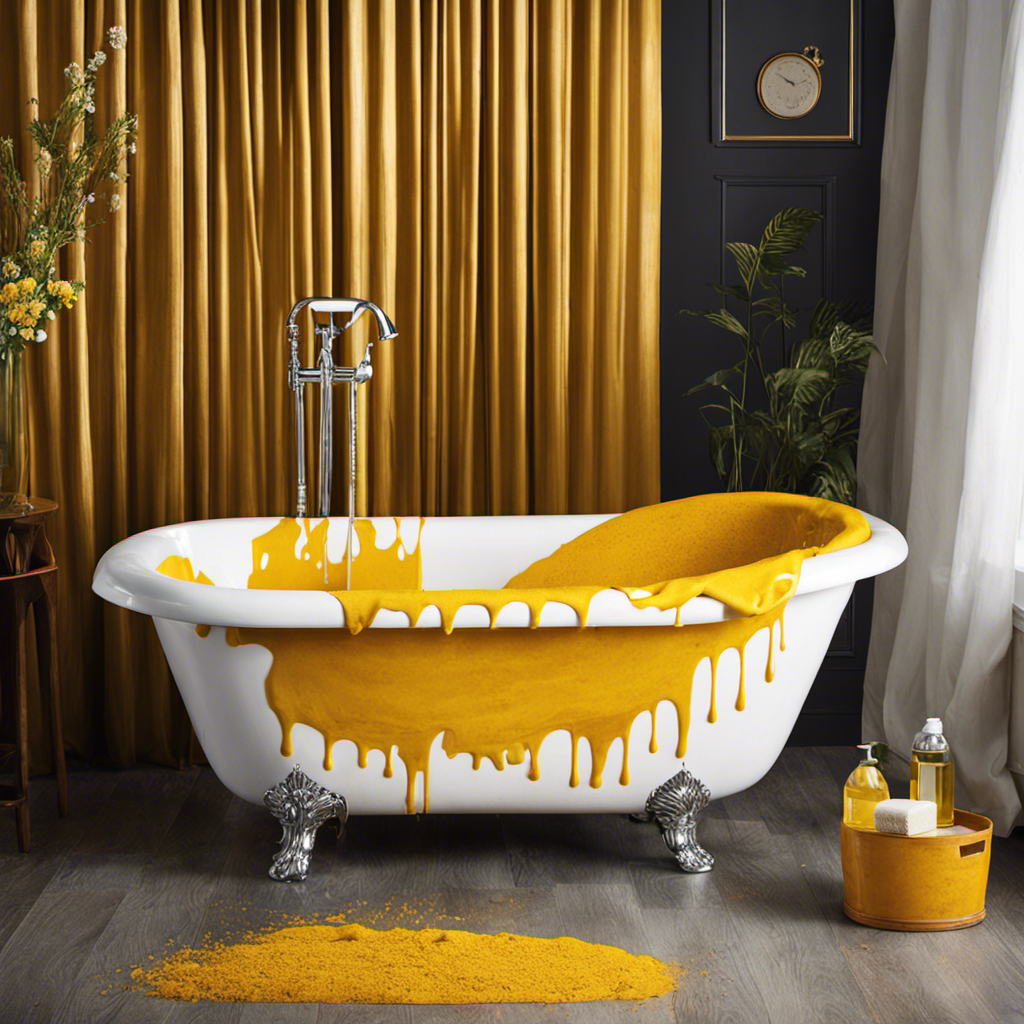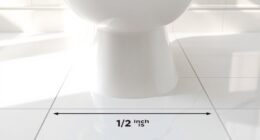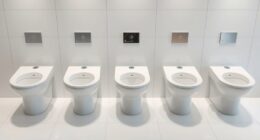Have you ever wondered just how many gallons your bathtub can hold? Well, wonder no more! In this article, I will guide you through the process of determining the capacity of your bathtub.
We will explore the factors that affect bathtub gallon capacity, standard bathtub sizes, and how to calculate the gallons in your specific bathtub.
Additionally, I will provide some helpful tips for maximizing water efficiency in your bathing experience.
Get ready to dive into the world of bathtub gallons!
Key Takeaways
- The capacity of a bathtub can be determined by measuring its dimensions and calculating the volume in cubic inches.
- Factors such as size, shape, and depth of the bathtub can affect its gallon capacity.
- Bathtubs made of materials like acrylic or fiberglass may have a larger capacity due to thinner walls, while those made of cast iron or stone may have a smaller capacity due to thicker walls.
- Understanding standard bathtub sizes and average gallon capacity can help in choosing the right bathtub for your bathroom.
Determining the Capacity of Your Bathtub
To determine the capacity of your bathtub, you can use a simple method to measure the number of gallons it can hold.
First, start by measuring the dimensions of your bathtub. Use a tape measure to find the length, width, and depth of the tub.
Multiply these measurements together to calculate the volume in cubic inches. Then, divide the volume by 231 to convert it to gallons.
It’s important to note that the capacity of a bathtub can vary depending on the type of material it’s made from. Common types of bathtub materials include acrylic, fiberglass, and enameled cast iron.
Each material has its own unique properties and may affect the capacity of the tub. By measuring the dimensions and considering the material, you can accurately determine the capacity of your bathtub.
Factors Affecting Bathtub Gallon Capacity
The factors that affect a bathtub’s gallon capacity include its size, shape, and depth. These factors play a crucial role in determining how much water a bathtub can hold.
The size of the bathtub refers to its overall dimensions, such as length, width, and height. The larger the bathtub, the more water it can accommodate.
Additionally, the shape and design of the bathtub can also impact its gallon capacity. Bathtubs with curved or irregular shapes may have a smaller capacity compared to rectangular or square-shaped ones.
Moreover, the materials used in bathtub construction can also affect the gallon capacity. Some materials, like acrylic or fiberglass, allow for thinner walls, providing more space for water. In contrast, materials like cast iron or stone may have thicker walls, reducing the capacity.
Understanding these factors is essential when considering the right bathtub for your needs.
In the next section, we will explore standard bathtub sizes and their average gallon capacity.
Standard Bathtub Sizes and Average Gallon Capacity
When choosing a bathtub, you’ll want to consider the standard sizes and average gallon capacity.
Bathtub design trends are constantly evolving, with homeowners looking for sleek, modern designs that not only enhance the aesthetic appeal of their bathrooms but also provide a relaxing bathing experience.
Additionally, eco-friendly bathtub options have gained popularity in recent years, as more and more people are becoming conscious of their environmental footprint. These eco-friendly options often incorporate sustainable materials and water-saving features, helping to conserve water without compromising on comfort and style.
Understanding the standard sizes and average gallon capacity of bathtubs is crucial in determining the right fit for your bathroom and ensuring that you have enough water to fully immerse yourself.
Now, let’s delve into the process of calculating the gallons in your bathtub.
Calculating the Gallons in Your Bathtub
If you’re curious about how much water your bathtub can hold, you can easily calculate its gallon capacity. By calculating water usage and estimating the bathtub volume, you can have a better understanding of how much water you are using. To do this, you will need to measure the dimensions of your bathtub. Using these measurements, you can then calculate the volume of the tub in cubic feet. To convert this to gallons, simply multiply the volume in cubic feet by 7.48.
Here is a table to help you visualize the process:
| Measurement | Length (feet) | Width (feet) | Depth (feet) |
|---|---|---|---|
| Bathtub | 5 | 2.5 | 1.5 |
To calculate the gallon capacity of this bathtub, you would multiply the length by the width by the depth and then multiply the result by 7.48. In this case, the calculation would be 5 x 2.5 x 1.5 x 7.48, resulting in a gallon capacity of 55.5 gallons.
Now that you know how to calculate the gallons in your bathtub, let’s move on to some tips for maximizing water efficiency.
Tips for Maximizing Water Efficiency in Your Bathtub
To maximize water efficiency in your tub, consider taking shorter showers and installing a low-flow showerhead. These water-saving techniques not only help conserve valuable resources, but also contribute to a more eco-friendly bathing experience.
Additionally, the impact of bathtub materials on water efficiency should not be overlooked. Opting for materials that retain heat well, such as cast iron or acrylic, can help reduce the amount of hot water needed for each bath. This means less water and energy wasted, as the water will stay warm for longer periods of time.
Furthermore, properly insulating the bathtub and its surrounding area can also prevent heat loss, ensuring that the water remains at the desired temperature for a longer duration.
Conclusion
In conclusion, determining the capacity of your bathtub is essential for understanding its water efficiency. Factors such as size, shape, and depth all affect the bathtub’s gallon capacity.
By calculating the gallons in your bathtub, you can make informed decisions about water usage. Remember, maximizing water efficiency is crucial in today’s world.
So, be knowledgeable, precise, and technical when it comes to conserving water in your bathtub. Let’s create a ripple effect of water conservation for a better tomorrow.










